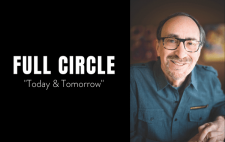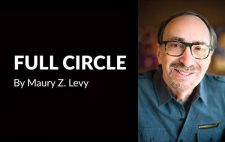I really did good in school. Wait, that’s not right. I really did well in school. Yep, that’s better.
My teachers kept telling me that I was smart, and I should be doing even better. But I had one major problem: math. Math was my kryptonite.
While the other kids eagerly listened to every math lesson, and smiled with understanding, all I ever heard was “wah, wah, wah.” It made no sense to me. It didn’t register. Math just didn’t add up.
The only math I knew was baseball batting averages. I kept score at every game I ever went to. And I used simple division to figure out that when Del Ennis went 2 for 5, he was hitting .400.
I’ve been told it’s a right brain, left brain thing. I don’t know about that. When I came home with a D on a math test, my mother slapped me on both sides of my brain.
“It’s not my fault,” I cried.
“Then whose fault is it,” she said, “Milton Berle?” She didn’t laugh.
“Come on,” I said, “that’s not fair. I would never blame anything on Milton Berle. Pinky Lee, sure. But not Milton Berle.”
My math handicap stayed with me through high school and college. I think I was the only kid in the history of Temple University who had to take Math 1 twice.
I became the kid who raised his hand in class and asked the professor, “Can you tell me when I will ever use this in real life?”
He shook his head. “There’s always one,” he said. I was proud to be singled out.
And so, as overtly stupid as I was, when I graduated, I did the only thing that made sense to me. I married a math teacher. We complimented each other nicely. My wife couldn’t write a birthday greeting, and I couldn’t add numbers larger than 10.
She was a very conscientious teacher, my wife. For 33 years, while I sat each night watching ball games, she sat grading papers.
“You’re not going to believe what this one kid did,” she would say. “He tried to divide a fraction by 0.”
I would look at her and just shake my head. “Yeah, that’s terrible,” I would say, “What a dummy.” Fact was, I had no idea what she was talking about.
Every once in a while, though, she would try to test my knowledge. The question everyone remembers is this: “The probability of rain on each of the next four days is 50%. The probability of rain on at least one of those days is: A. 50% B. less than 50% C. more than 50% D. cannot be determined
“That’s easy,” I said. “The answer is 50%. One day’s probability has nothing to do with the next. So, then every day is 50%.”
“That’s wrong,” she said. “It’s more than 50%. Way more.” And then she showed me something with lots of X’s and Y’s and said, “It’s actually 94%. There are 16 possible choices and only one of them has no rainy days.”
“I disagree,” I said.
“You disagree? You can’t disagree. It’s math, not opinion. You can’t disagree with math.”
“But wait,” I said, as I quickly Googled “mathematical theories.”
“Look here, the Pythagorean Theorem was adjusted by one of Pythagoras’ own disciples.”
“Big deal,” she said. “One theory.”
“But wait,” I said. “There’s more. The idea that transcendental numbers are unusual was challenged by George Cantor. And in 1919, George Polya proved that most numbers less than any particular limit have an odd number of prime factors. But that was challenged in 1958.”
By now, you know I had no idea what those examples meant. But they were on Wikipedia, so they must be true.
She looked at me and just shook her head. “Why don’t you just go get your pillow,” she said.
“Why?”
“Because there’s more than a 50% chance you’re sleeping on the couch tonight.”












